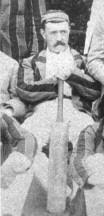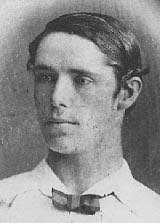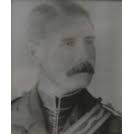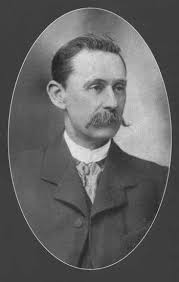We all know that Joe Denly once hurt his ankle playing football in a kickabout, causing him to miss a few games, and that Rob Key has legendary keepy-uppy skills, but what of the men who played cricket for Kent and also football at League or even international level? With a minimum of research, I have come up with twelve (or possibly thirteen) names of players who turned out for Kent in at least one first-class game, and also played football at league level or higher.

The first five of those double sportsmen played in the Victorian age, in the early days of both county cricket and organised football, when there was little or no overlap between the seasons and talented sportsmen had time to play both games. They were great athletes, no doubt, but we could also add that competition was not as great as it is now, even at the highest level. Men like Morton Peto Betts, who played 2 games for Kent, once in 1872 and once in 1881, scoring a total of 44 runs for twice out, were typical of the talented amateur sportsmen of the day who knew the right people to get themselves selected for all sorts of teams playing a variety of sports. Shortly before his first-class debut for Kent, he had scored the first ever goal in an FA Cup Final, which his team, The Wanderers, went on to win. He was by no means a one-team sort of a man – he played in the Cup Final under the alias of A.H. Chequer, having been selected in an earlier round for the Harrow Chequers side, although in the event the Harrow side gave a walkover to their first-round opponents. Theirt opposition in that match were due to be Wanderers, and by the time that club reached the final, ‘Monty’ Betts had switched his allegiance and was playing for them. It was the same with his cricket loyalties – just six days after playing for Kent in 1872, he turned out for Middlesex against Surrey, and a few years later became secretary of Essex CCC. Meanwhile in 1877, he played his one game of football for England, against Scotland.

Three other Kent men would have played football with and against Betts, and also cricket for Kent. Cuthbert Ottaway played only twice for Kent, once in 1869 and once in 1870, but he was described by R.L. Arrowsmith in his history of Kent CCC as ‘a magnificent bat’, while Lord Harris said he was ‘entitled to be regarded as one of the finest batsmen ever turned out by any of the public schools.’ For Kent he only scored 70 runs at 17.50, but he was still only 19 when he made his debut, and he did rather better in subsequent seasons playing for Oxford University and Middlesex. In the 1871-72 FA Cup competition, he emulated Betts by playing for two different teams, but without either side reaching the final, but he then played in three consecutive FA Cup Finals, from 1873 to 1875, winning two and losing one. He also captained the England football team twice, firstly in our first ever football international, against Scotland in 1872, and again in 1874. Cricket and football were not the full range of his athletic skills, however. At Oxford, he won blues for cricket, football, rackets and athletics – he was a 100 yards champion – and was reportedly a very skilful tennis player. His life was brilliant but short. He died in April 1878, aged only 27, probably from complications of diabetes.

Then there is Henry Renny-Tailyour, another ridiculously versatile amateur who played only 19 games for Kent, but that was enough to be awarded his cap, number 11. He was described as ‘a batsman, steady when necessary, but also a great punisher of loose bowling’. His top score for Kent was 124, against Lancashire at Maidstone in 1874. He played football for Scotland against England in 1873, scoring the first goal in Scotland’s 4-2 defeat, the first goal ever scored for Scotland in an official international. Mind you, Scotland were already 2-0 down when he scored. He won the FA Cup with the Royal Engineers, playing alongside Cuthbert Ottaway in 1875, having been on the losing side in both 1872 and 1874, and just to prove that he could succeed at any sporting code, he also played rugby union for Scotland against England at the Oval in 1872. He remains the only man ever to have played for Scotland at both football and rugby.

Herbert Rawson, who was also in that Royal Engineers side that reached the FA Cup final in 1874 and then won it in 1875, had a slightly less glittering sporting career than either of his team-mates Kent team-mates Ottaway or Renny-Tailyour. He played one game for Kent, in 1873 against W.G. Grace’s XI at Gravesend, ending his Kent career with as many runs as I have made for the county – 0. A pair in your only first class match is not much to write home about, but he was a wicket-keeper and did take one catch and stumped three unwary batsmen. In 1874 he had been on the losing side in the FA Cup Final, while his brother William played for the winners, Oxford University. In 1875, things improved, for as well as winning the FA Cup, he represented England at football, this time playing alongside his brother William, making the Rawsons the first brothers to play football together for England.
A few years later, Clement Mitchell played a few games for Kent. He was a left-handed batsman and a noted fielder, but never really made his mark in his eight matches for Kent between 1890 and 1892. He made only 126 runs at an average just below 10, but according to F.S. Ashley-Cooper in The History of Kent County Cricket, this was ‘because, whenever he appeared for the county, the wicket was against run-getting’. I came up against those wickets with monotonous regularity throughout my playing career. He played for Kent well after his football playing days were over, but as a footballer he will forever be remembered as the first England player to score a hat-trick, a feat he achieved against Wales at the Oval in 1883. He was then playing club football for Upton Park, no direct relation to West Ham United these days, and scored in the 16th, 70th and 90th minutes as England won 5-0.
Of all the men I have written about above, only Henry Renny-Tailyour was capped by the county, and most of them were far more famous for their efforts on the football field than anything they achieved playing cricket. In the next blog, I will take a look at a number of Kent players whose main claim to fame is a cricketing one.
0 Comments